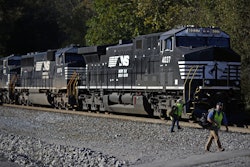
Breaking news is not new news but when it comes to fulfillment it seems that headlines are stuck. Stringent regulatory environments are affecting operational costs, efficiency and the overall market— and have businesses constantly evolving to fit the times. In short, potential social media bans, tariffs and a focus on the regulation of Chinese goods is dicey water to navigate today.
Take TikTok for example. The shopping section of the trending app has seen a boom in e-commerce like never before. Through the promotion of products with the minimal costs of influencer programs and sharing, it's become a clever section of an app originally intended for simple short form content. But as you know, unless of course you live under a rock, President Biden recently signed a bill that may force TikTok out of U.S. operation or implement a ban of the app entirely. Brian Tu, CRO of DCL Logistics, says this would mean some customers' order volumes could slow down, and affect sales and fulfillment needs.
Specific regulations targeting goods made in China add another layer of complexity. With U.S. considering banning certain goods made in China, and companies like DJI under scrutiny, Tu says a shift towards more consumer electronics and hardware manufacturing in the U.S. could be on the horizon.
Additionally, trade policies, such as tariffs and import restrictions, can directly impact the cost structure and inventory management strategies of fulfillment centers, especially those handling Chinese goods. The U.S. is considering raising tariffs on Chinese products from the current 25% to potentially 60%, and as Tu explains, there has been increased demand for Section 321, which allows for the duty-free importation of goods valued at $800 or less. However, Tu explains that many have already shifted manufacturing away from China, mitigating some of the impact of these potential tariff increases.
Reconfiguring supply chains, investing in compliance management systems, or even relocating fulfillment operations to regions with more stable regulatory environments may happen. Ultimately, these regulatory pressures emphasize the need for a proactive and adaptable approach within the fulfillment and logistics industry to maintain the objective of peak efficiency.




















